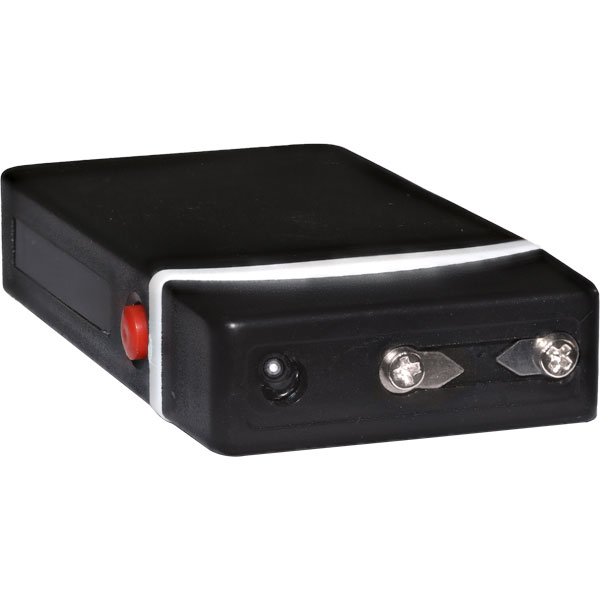
Brainstorm Security Shop

For Orders Over $199

On Any Of Our Products

Details On Refund Page
When considering the effects of an stun gun, it is crucial to understand the impact they can have on an individual’s nervous system and muscle control. The use of stun guns can lead to temporary incapacitation, buying you a moment to react in a dangerous situation. However, what happens beyond this initial jolt and how different factors can influence the outcome is a complex interplay worth exploring further. Understanding these nuances can help you make informed decisions about the role stun guns may play in your personal safety arsenal.
Small stun guns offer a convenient and effective means of self-defense for individuals seeking compact and easily portable protection. These compact devices can easily fit in a purse, pocket, or attach to a keychain, making them ideal for carrying discreetly wherever you go. The benefit of their small size is that they’re lightweight and easy to handle, allowing for quick access in times of need.
One advantage of small stun guns is their ability to incapacitate an attacker temporarily without causing long-term harm. The electric shock emitted by the device can disrupt the attacker’s nervous system, causing pain and muscle contractions that can immobilize them briefly, giving you a chance to escape and seek help.
Moreover, small stun guns are relatively easy to use, typically requiring a simple push of a button to activate.
In addition to their effectiveness, small stun guns are also cost-effective compared to other self-defense options like pepper spray or tasers. They provide a non-lethal alternative for self-protection, making them a popular choice for individuals looking to enhance their personal safety without breaking the bank.
To understand how stun guns work, it’s important to grasp the mechanism behind their ability to incapacitate attackers temporarily. Stun guns operate by delivering a high-voltage, low-amperage electrical shock to the target upon contact.
When you press the stun gun against an assailant and activate it, the electrical current interferes with the body’s neurological impulses, disrupting communication between the brain and muscles. This disruption causes the muscles to contract rapidly, leading to a loss of control over motor functions.
The intense pain and muscle contractions induced by the electrical shock can incapacitate the attacker, providing you with an opportunity to escape and seek help.
Stun guns are designed to be non-lethal and are meant to subdue attackers without causing long-term harm. It’s crucial to aim for areas with large muscle groups, such as the torso, thighs, or shoulders, to maximize the effectiveness of the stun gun. Understanding how stun guns work can help you use them safely and effectively in self-defense situations.
Consider the intended purpose and ease of handling when selecting the appropriate size of a stun gun for self-defense. The size of a stun gun can significantly impact its effectiveness and convenience in various situations.
For discreet carry and easy concealment, smaller stun guns are ideal. These compact models are portable and can fit in a purse or pocket, making them convenient for everyday use.
However, if you prioritize a stronger jolt and a more intimidating appearance, larger stun guns with extended reach may be preferable. These larger options often come with additional features like built-in flashlights or loud alarms, enhancing their utility in emergencies.
When choosing the right size stun gun, it’s essential to strike a balance between power and portability based on your specific needs. Consider factors like your comfort level with handling larger devices, the level of protection you require, and how you plan to carry the stun gun.
Ultimately, selecting the appropriate size stun gun ensures that you’re prepared to defend yourself effectively in various situations.
When it comes to stun guns, understanding the legal considerations is vital for ensuring you comply with local regulations and use the device responsibly. Stun guns are subject to specific laws that vary from state to state and even within different cities. Before purchasing or carrying a stun gun, it’s crucial to research and understand the legal restrictions in your area.
Some regions may require a permit to possess a stun gun, while others may have outright bans on these devices.
In addition to permits, there are usually regulations regarding where you can carry a stun gun. For example, certain places like schools, government buildings, or airports may prohibit the possession of stun guns. It’s essential to be aware of these restrictions to avoid legal trouble.
Misuse of stun guns can lead to serious consequences, including criminal charges. Therefore, it’s imperative to use these devices responsibly and only in situations where self-defense is necessary. Understanding the legal considerations surrounding stun guns isn’t only important for your safety but also for staying within the boundaries of the law.
Stun guns can be a valuable tool for self-defense in certain situations. When used properly, they can incapacitate an attacker temporarily, giving you the chance to escape and seek help. Stun guns work by delivering a high-voltage electric shock to the attacker upon contact, causing pain, muscle contractions, and disorientation.
One of the main advantages of using a stun gun for self-defense is that it doesn’t require close contact with the attacker. This means you can defend yourself from a safe distance, reducing the risk of physical harm. Stun guns are also non-lethal weapons, making them a less deadly option compared to firearms.
However, it’s important to note that stun guns may not be effective against individuals under the influence of drugs or alcohol, or those with a high pain tolerance. Additionally, stun guns require proper training and practice to use effectively in high-stress situations.
In conclusion, stun guns offer a non-lethal self-defense option that can provide a valuable advantage in threatening situations. Their ability to temporarily incapacitate attackers can give individuals the opportunity to escape and seek help.
It’s important to choose the right size stun gun, be aware of legal considerations, and receive proper training to ensure their safe and effective use.

Brainstorm Security Shop
1867 Caravan Trail
Ste 105
Jacksonville, FL 32216
Call us toll free: (800) 859-5566